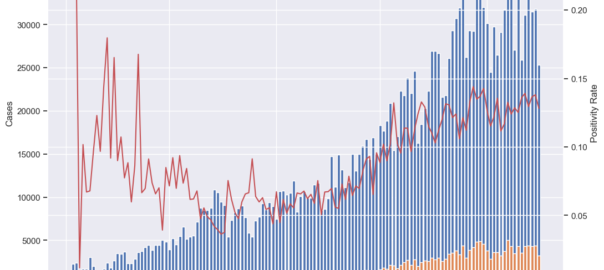Over the past couple of days, a working paper from Jan Fredrick Cruz from the Ateneo center for Economic Research and Development has been getting much media attention for estimating that the Philippines may have had close to 3 million undetected COVID-19 cases in the 2nd quarter alone. The paper, titled An Empirical Argument for Mass Testing: Crude Estimates of Unreported COVID19 Cases in the Philippines vis-Ã -vis Others in the ASEAN-5 can be downloaded here.
Essentially, the paper uses Singapore’s case fatality rate (CFR) to re-compute the fatality rate of other ASEAN countries. The main issue here is that Singapore’s CFR is really low and is obviously an outlier in comparison to CFRs of other countries. Based on the latest mortality data compiled by John Hopkins University, Singapore currently has the lowest CFR. JHU lists it at 0.0% since they only go up to the first decimal place, but Singapore’s current CFR is about 0.05%. This is now slightly lower than its CFR in Q2. The median CFR among around 160 countries is currently about 2.2%, while the global CFR is around 3.5%. The Philippines’ CFR is currently 1.6%.
So what the Ateneo paper did is assume that Singapore’s best-in-the-world CFR is also applicable to other ASEAN countries, to come up with an estimate of undetected cases.
The first problem with this is that Singapore’s CFR is really absurdly low. If you apply Singapore’s CFR to a country like Germany (4% CFR) which currently has about 230,000 cases, you’ll come up with a total of about 18.4 million cases. Note that Germany is one of the countries considered to have performed well in addressing the pandemic.
The second problem is that the CFR is subject to change as testing capacity improves and more asymptomatic/mild cases are detected. The Philippines’ current CFR is half of its CFR in Q2. If we now use the paper’s method of applying Singapore’s CFR to the Philippines’ current CFR, the total estimated cases would then be about 2.4 million cases, compared to 178,000 cases as of August 20, 2020. So the paper estimated 2.8 million cases in Q2 alone, but applying the same method now would yield a lower estimate. That doesn’t make sense at all and shows the crude methodology’s lack of self-consistency. It’s such a simple sanity check that the author should have done before pushing out this paper.
The author uses the paper’s findings to conclude that the Philippines should improve its testing and tracing strategy. I have no objections there, but at least try to make arguments that make sense. Insisting that we should expect Singapore’s CFR to be applicable to the Philippines may lull us into thinking that COVID-19 is not that dangerous, if, after all, we did indeed “miss” 3 million cases and only have fewer than 3,000 deaths.
